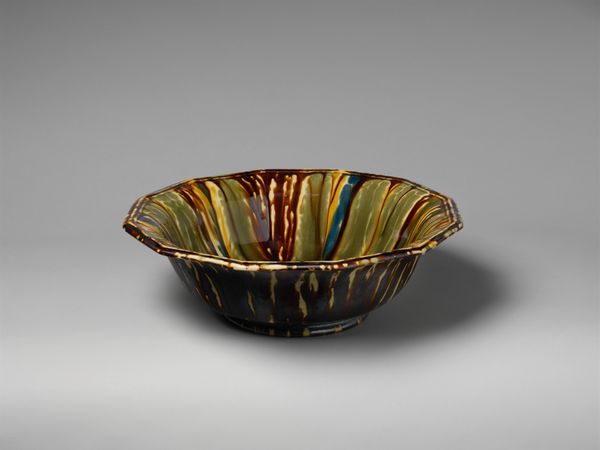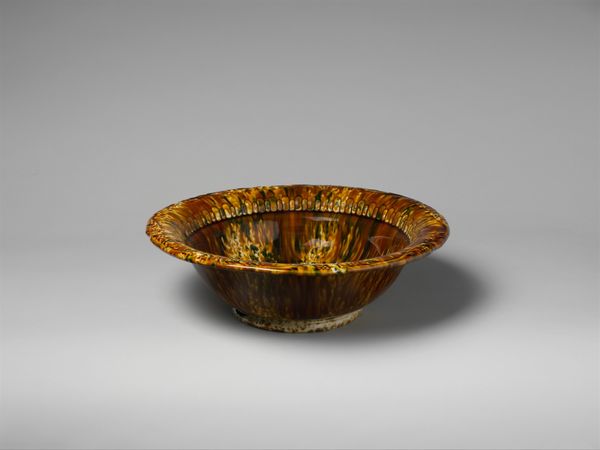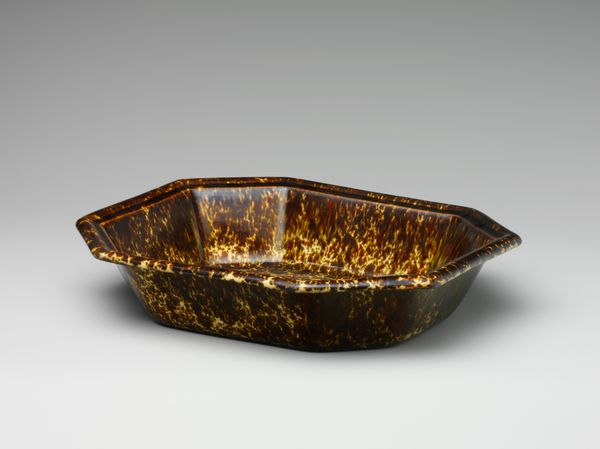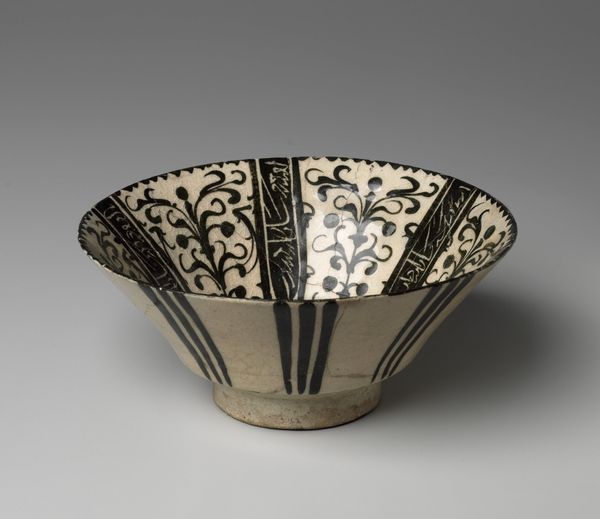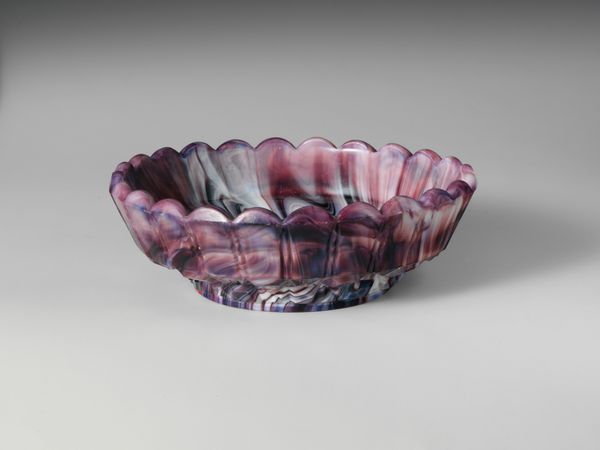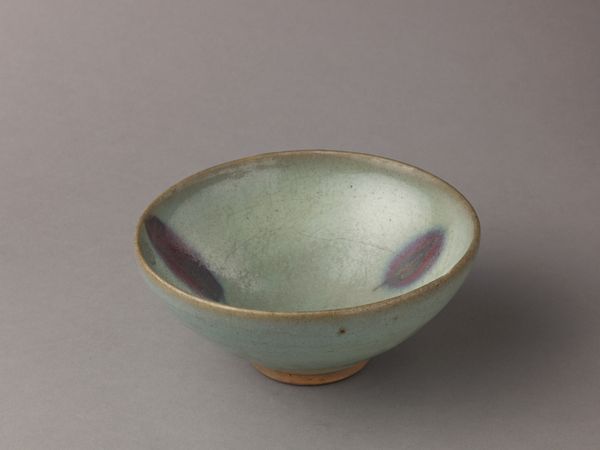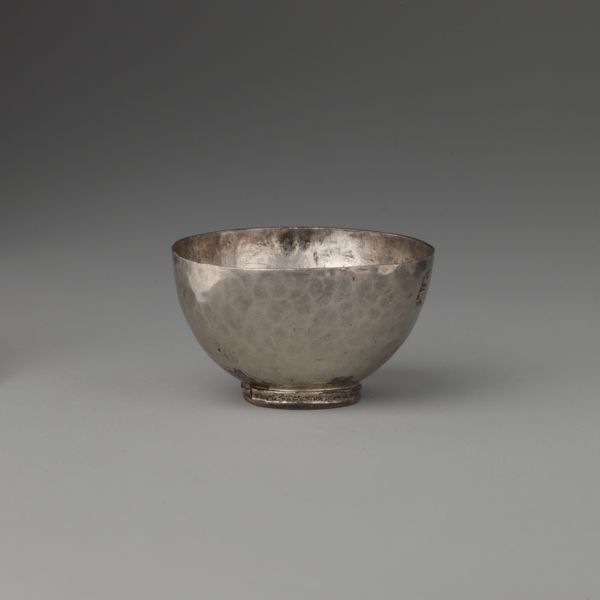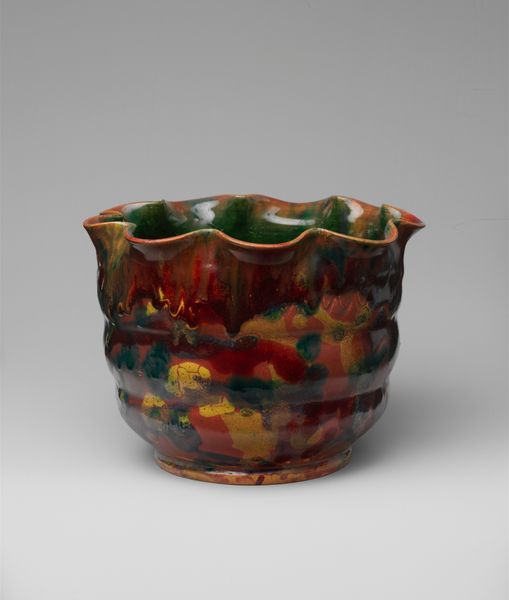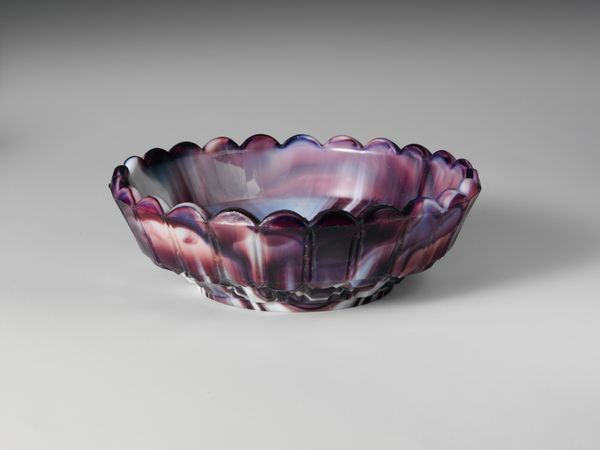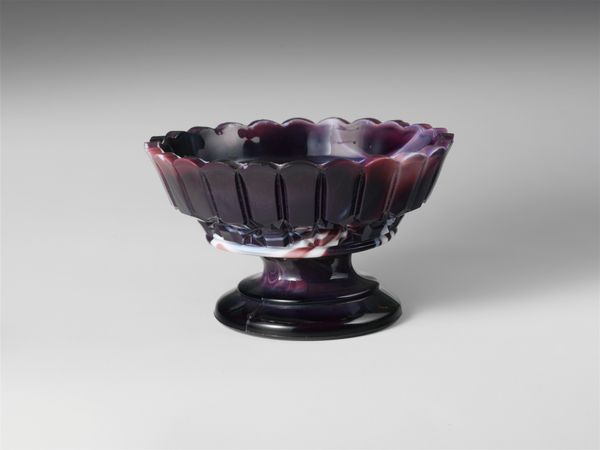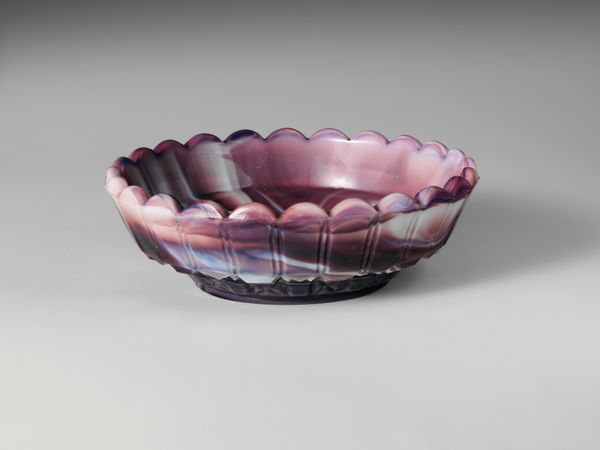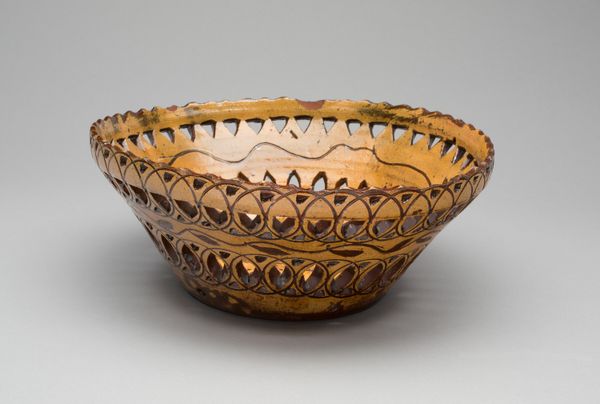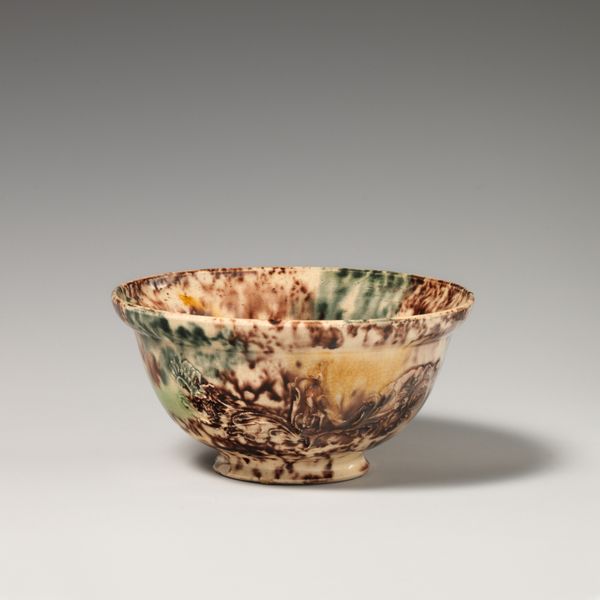
ceramic
#
ceramic
#
ceramic
#
united-states
Dimensions: H. 4 3/8 in. (11.1 cm); Diam. 13 in. (33 cm)
Copyright: Public Domain
Curator: Looking at this ceramic piece, "Basin" by Lyman, Fenton & Co., made sometime between 1846 and 1858... its form feels rather sturdy, wouldn't you agree? Editor: Sturdy is one word for it. To me, it seems like a cosmic collision in a bowl! A dark, swirling vortex erupting with flecks of amber and cerulean. There's something almost unsettling about it. Curator: Unsettling? Perhaps it’s the glaze? It’s a striking example of Rockingham ware. Notice how the mottled colors are achieved by layering different colored slips before firing? It gives the ceramic an almost marbleized effect. Editor: Exactly! That layering you mentioned... the effect is less marble and more oil slick. Do you think that those blues, the way they subtly bleed into the umber, might be accidental, or intentional symbolism? Curator: That’s a wonderfully intuitive read! In its time, Rockingham ware like this basin was wildly popular for its mass production imitating luxury materials for a burgeoning American middle class, which is about pragmatism not about poetry! This democratization of style meant the decorative arts landed in many hands. Editor: So this object, as commonplace as it might have been, would act almost like a tiny, private dreamscape in someone's home? I keep feeling like this basin holds more stories in its glaze, like it holds ancient rivers reflecting on a dying sun. It evokes the weight of unspoken secrets. Curator: Your romantic sensibility brings a very needed human component to art interpretation, I might not be seeing. Looking at this piece, in the galleries of The Met, with our 21st-century gaze we're naturally bringing entirely fresh sets of associations! It sounds silly, but every work is a meeting point and our impressions give the old materials the chance to still do their song, somehow! Editor: Yes, it's the alchemy of interpretation, right? Seeing old objects in a new light and discovering reflections of ourselves. I think I appreciate its moody ambiguity a lot more now. Curator: Yes! Well put. Perhaps let's move to the next gallery?
Comments
No comments
Be the first to comment and join the conversation on the ultimate creative platform.
